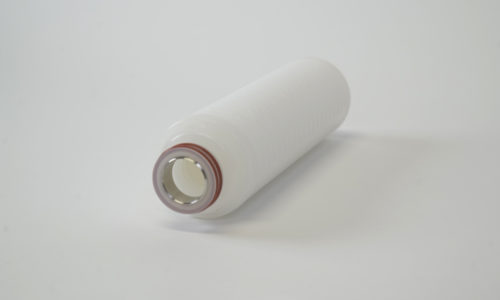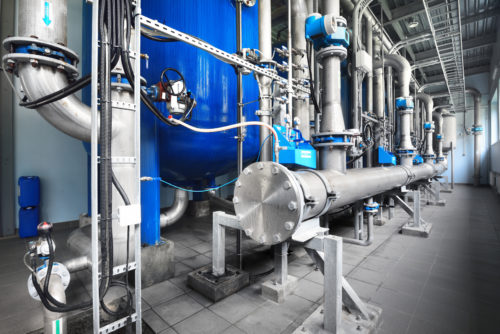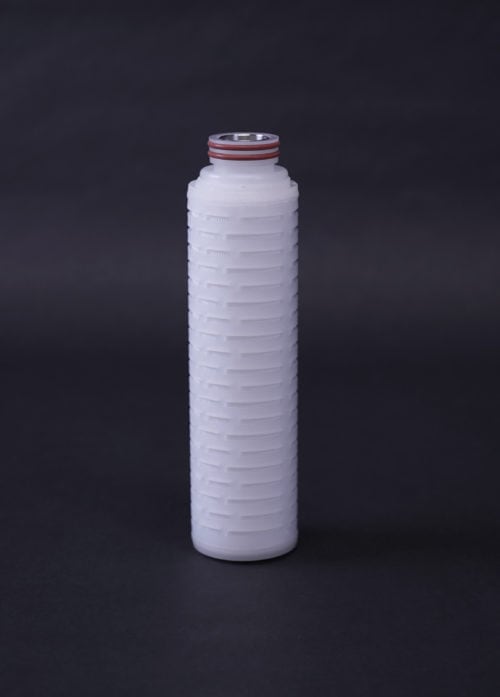H&V has developed innovative porous materials for over two centuries; microfiltration products for liquid filtration have been used by customers for over two decades:
- Wetlaid cellulose materials are used for semiconductor process water, electroplating, electrical discharge machining, and many other microfiltration processes.
- Wetlaid glass products are used in many analytical and test kit activities overseen by the US Food and Drug Administration (“FDA”), as well as in cartridges used in biopharmaceutical, ink and dye production.
- Meltblown polypropylene (“PP”) products are used by the biopharmaceutical industry because of their low protein binding in upstream and downstream processing. Meltblown polyester (“PBT”) is used in the food and beverage industry for the production of beer and wine.
- Trupor® Nylon products – available through our distribution partner Superior Felt and Filtration (link) – are used in water filtration and other cartridge applications, including point-of-use (“PoU”) elements.
- Trupor® PES-PBT and PVDF-PBT products have been incorporated into analytical products by our partner, IW Tremont, including their LabExact® (website, Amazon) brand.

How does Microfiltration fit into Liquid Filtration?
There are four filtration mechanisms used in water treatment. The universe of water treatment methods is very broad – including ultraviolet light, flocculants, and a broad range of chemical, physical, physiochemical, and biological technologies – filtration, defined by the following four mechanisms, is simply one tool available to companies that work with process liquids.
- Particle Filtration: Particles larger than 10 micron often separated at one atmosphere of pressure.
- Microfiltration: Particles from 10 micron down to 0.1 micron are separated under pressure.
- Ultrafiltration (“UF”): Higher pressure is used to separate particles from 0.2 micron down to 0.01 micron.
- Nanofiltration and Reverse Osmosis (“RO”): Even smaller particles are removed using even higher pressures to create a concentrated brine waste stream and pure water.
Why focus on microfiltration?
H&V focuses on microfiltration because it’s the right combination of our expertise in manufacturing high performance microporous materials and markets with a demand for innovation. H&V’s wetlaid (glass and cellulose), meltblown (polypropylene and polyester) have delivered best in class performance for decades. With the introduction of Trupor® H&V has continued that tradition of performance down to tighter pore sizes. Trupor® is available in 0.20 um, 0.45 um, 0.65 um, 0.80 um, 1.2 um, and 5.0 um.
What makes microfiltration exciting?
Microfiltration is a fundamental tool used in many industries:
- Biopharmaceuticals and large molecule therapeutics are mostly made with proteins. Microfiltration is used to harvest the proteins and ensure they are safely delivered. The first
monoclonal antibody (“mAb”) – a protein – was approved by the FDA for use in 1986, 61 mAbs were in use by 2017. Nine were authorized for use alone in 2021. $163 billion was spent on these proteins in 2019.
- Water filtration. Point-of-Use (“PoU”) filtration helps households and restaurants deliver clean, good tasting water. $16 billion was spent on PoU filtration in 2021. Clean water helps coffee taste better, helps keep our homes clean, and reduces the risk of foodborne illness.
- $4.5 billion was spent in the High-Performance Liquid Chromatography market in 2020 – just one of many analytical paper and membrane markets that benefits from H&V products. I.W. Tremont makes use of H&V’s Trupor® products – in PES-PBT and PVDF-PBT for use in this application.
- Over $3 billion was spent in the EDM market in 2019 – one of several industrial markets that depend on high performance microfiltration to improve yields and increase the resolution of advanced manufacturing activities. Industrial markets depend on improved microfiltration to improve the re-use of water, reducing the loads on local water treatment systems, reducing costs, and decreasing the size of their industrial footprint.
- Food & Beverage. The safety and quality expectations for microfiltration membranes are set by the FDA and biopharmaceutical producers – and they are then adopted by food and beverage makers worldwide. Improving flow rates of filters allows brands to deliver new tastes with longer shelf lifes – they can reduce dependence on heat and chemicals to maintain and extend shelf life of their products.
The broad impact of microfiltration improves industries that make the world a better place. More clean water makes the world better. H&V’s mission is a cleaner, healthier, more sustainable world – improving microfiltration advances that cause with every customer we support.
How does Trupor® Help Cartridge Makers Extend Their Microfiltration Business?
Cartridge makers face a challenging environment from microfiltration product buyers. H&V designs products that make it easier to sell to cartridge users by addressing the challenges that cartridge buyers face.
- Trupor® is designed for multiple markets, lowering the cost of long qualification cycles. It takes a long time for new cartridge buyers to qualify a new product for use in their process streams. H&V’s Trupor® is the first microfiltration media with a full validation guide that covers what matters to end buyers in demanding markets, making it easy to educate
customers on their top concerns about bio-safety, bio-compatibility and product performance.
- Trupor® fits changing regulatory expectations. Regulatory standards shift. Regulators increase their scope and increase their expectations of transparency from water, pharmaceutical, food, and beverage supply chains. H&V’s product teams stay on top of the regulatory expectations of the market and provide customers with up to date information as it becomes available. Cartridge makers want as few SKUs as possible with as broad a reach as possible – the Trupor® product family is designed to provide deep flexibility because of its applicability across multiple applications.
- New products need to have low risk. Liquid buyers want to purchase Nylon, Polyethersulfone and PVDF – which is why Trupor® is available in Nylon, PES-PBT and PVDF-PBT. The market wants to work with polymers with which it is already familiar. Cartridge makers need to make use of the same processing equipment. Media needs to work on the same pleaters they are already familiar with.
- Trupor® delivers superior flux. It’s costly to deploy new products based on all the reasons we’ve already listed – which means the cartridge maker needs to deliver superior performance to earn new customers. Trupor® consistently delivers twice the flux as existing microfiltration membranes at the same grade, using the same polymers. Trupor® makes the cost of new cartridge evaluation worthwhile.
Trupor® fosters cartridge creativity. Trupor® can be used as the efficiency layer in a microfiltration application, or as a co-pleated capacity layer. Trupor®’s higher flux allows for use of smaller form factors, or co-pleating with other liquid filtration components – such as carbon block, or active UV-light when applicable





 monoclonal antibody (“mAb”) – a protein – was approved by the FDA for use in 1986, 61 mAbs were in use by 2017. Nine were authorized for use alone in 2021. $163 billion was spent on these proteins in 2019.
monoclonal antibody (“mAb”) – a protein – was approved by the FDA for use in 1986, 61 mAbs were in use by 2017. Nine were authorized for use alone in 2021. $163 billion was spent on these proteins in 2019.
 customers on their top concerns about bio-safety, bio-compatibility and product performance.
customers on their top concerns about bio-safety, bio-compatibility and product performance.